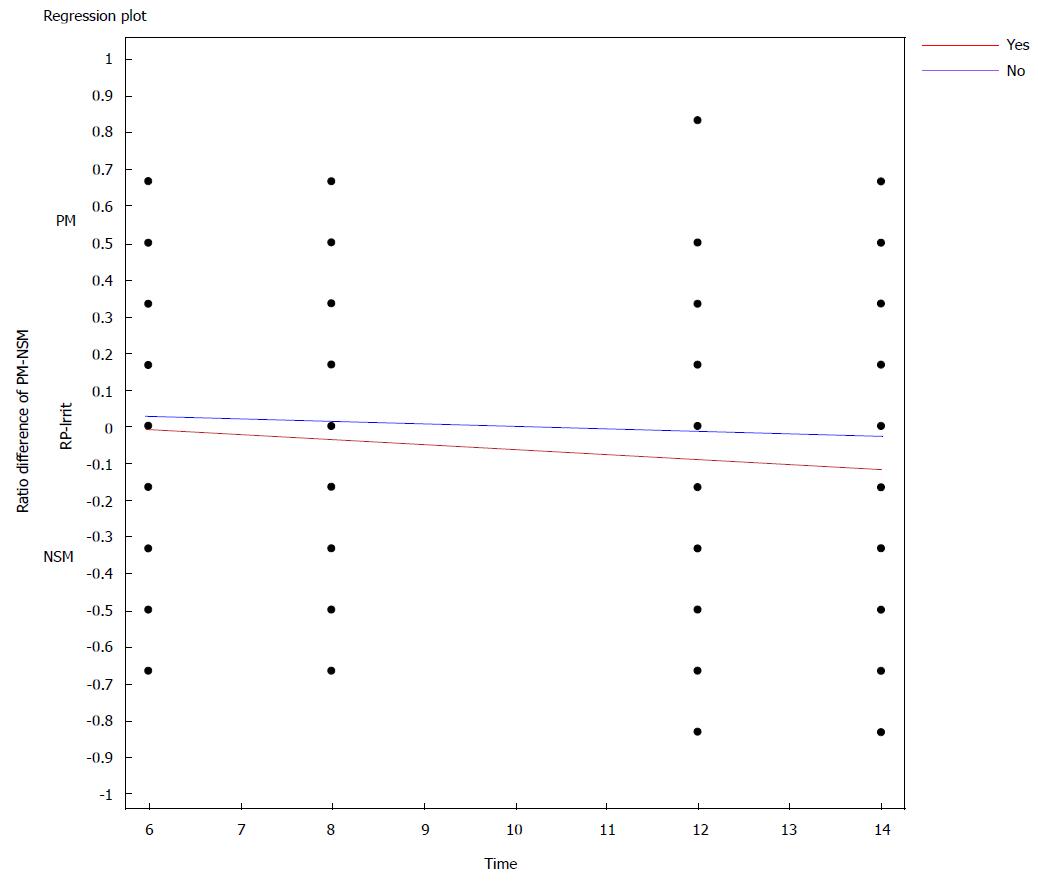Copyright
©The Author(s) 2015.
World J Psychiatr. Dec 22, 2015; 5(4): 412-424
Published online Dec 22, 2015. doi: 10.5498/wjp.v5.i4.412
Published online Dec 22, 2015. doi: 10.5498/wjp.v5.i4.412
Figure 2 Group (The Irritability Criterion with irritability vs No irritability) in relation to relative proportion of Pathognomonic Mania Ratio - Non-Specific Mania Ratio: Positive score 0 to +1.
0 links irritability to pathognomonic mania rather than non- specific mania and negative score -1.0 to 0 links the irritability status with non- specific mania rather than pathognomonic mania: Entire Model Random Regression Methods (df 3, 2523; F = 17.7; P < 0.0001). All Variables (Group status, assessments time, and the changes of group status over time) were linked to RP changes (effect of Irritability Status: F = 27.3; P < 0.0001; effect of Time: F = 32.5; P < 0.0001, and interaction of Irritability × Time: F = 4.3; P < 0.04). Irritability is linked at all time points with greater NSM than PM, and the linkage increases over time. Yes: Irritability present; No: Irritability not present. RP: Relative proportion; PM: Pathognomonic mania; NSM: Non- specific mania; ADHD: Attention deficit hyperactivity disorder; LNCG: Local normative comparison group; RRM: Random regression methods.
- Citation: Elmaadawi AZ, Jensen PS, Arnold LE, Molina BS, Hechtman L, Abikoff HB, Hinshaw SP, Newcorn JH, Greenhill LL, Swanson JM, Galanter CA. Risk for emerging bipolar disorder, variants, and symptoms in children with attention deficit hyperactivity disorder, now grown up. World J Psychiatr 2015; 5(4): 412-424
- URL: https://www.wjgnet.com/2220-3206/full/v5/i4/412.htm
- DOI: https://dx.doi.org/10.5498/wjp.v5.i4.412









